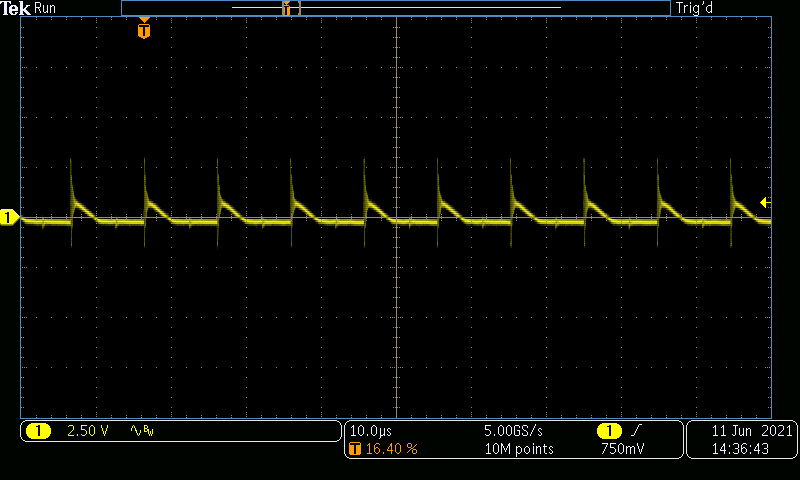TIDT244 July 2021
4.3 Output Voltage Ripple
The output ripple voltage is shown in the following figure. The ripple was measured tip and barrel across ceramic output capacitors C10 and C14.
 Figure 4-9 VIN = 400 V and VOUT =
400 V at 2 A. Resistive Load (VOUT: 2.5 V/DIV, 10 µs/DIV, BWL = 20
MHz)
Figure 4-9 VIN = 400 V and VOUT =
400 V at 2 A. Resistive Load (VOUT: 2.5 V/DIV, 10 µs/DIV, BWL = 20
MHz)